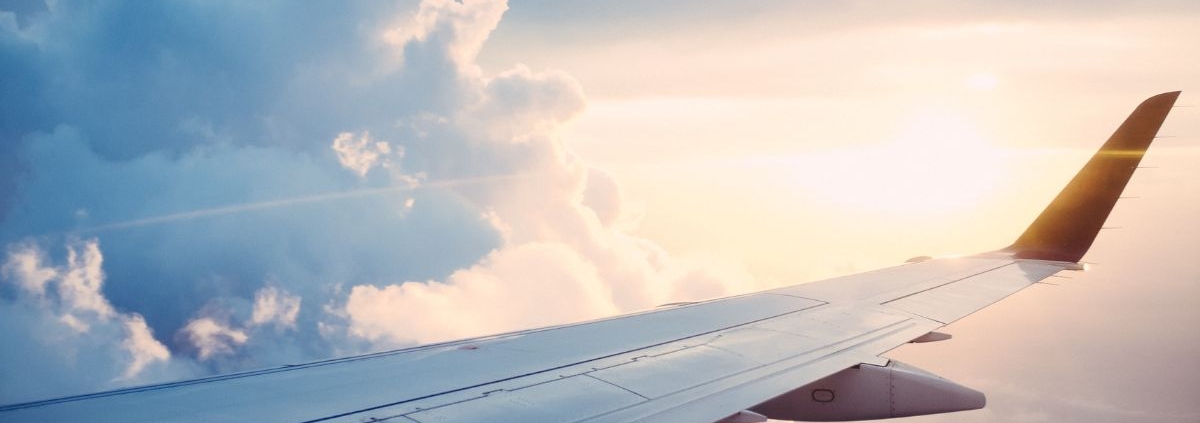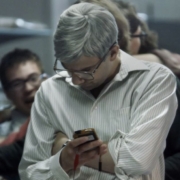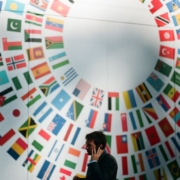Planning a Trip? Here’s How Your Travel Plans May Change in the Next Few Years
By: Michael McQueen
While the world of travel has been the industry perhaps most disrupted in the last couple of years, it is set for more disruption in the years to come – but in some of the most striking and novel ways.
With the capabilities of technology invading every facet of travel all the way from the transit to the destinations themselves, we are set to see our travel plans change more dramatically than we may think in the coming years.
The most futuristic of the changes set to take over our travel plans comes with our flight paths and planes. The advent of air taxis is upon us, and while they may take a while to overtake our current commercial travel conventions, they may be the new normal sooner than we think.
Electric Aircraft and Air Taxis
Joby Aviation, Inc. is a California-based aviation company that is in the process of developing its electric aircraft for commercial use. Having created their first protype, they have now received permission to begin flight testing. This will make their product the first aircraft to be built on a production line and likely also the first electric vertical take-off and landing (eVTOL) aircraft to reach the hands of a customer in the next year or so.[1] This kind of aircraft will bring the vision of efficient, quiet and convenient air taxis closer to the present than ever before.
Across the Atlantic, a German company called Volocopter is making similar strides. Recently at the Paris Air Show, the company executives showcased their air taxi prototype. Amidst a display of roaring aircraft engines and helicopters, Volocopter’s prototype caught the attention of many precisely they because they nearly didn’t notice it – it was so quiet. Rather than perform stunts and tricks, this aircraft demonstrated a kind of simplicity that suits it to the everyday use it hopes will be the norm within the coming years. The company is currently seeking approval within European regulations in the hopes that its air taxi services will be fit for use by the 2024 Paris Olympics.[2]
With these kinds of innovations taking place within the world of tech and engineering, the question is whether our societies will have the legislation and infrastructure to support them. As can be expected, Dubai is ahead of the curve with this, with architects having released a design for a ‘vertiport’. Foster + Partners, a UK architecture firm, revealed their design for this new kind of airport terminal which would facilitate VTOL vehicles like the air taxis mentioned.[3]
Customised, Sustainable Hotel Experiences
Not only are our modes of transport set to transform, but so are our destinations, with hotels rapidly adopting the customisation and sustainability trends that are dominating much of the market. The customisation and automation of the check in process, will remove a set of common pain points for customers, as will the apps that provide automatic language translation for international guests. With these processes automated, workers will be freed up to cater to guests more personally. Beyond this, the integration of personal data will mean digital channels can be personalised to the highest degree, as will the physical features of room layout, temperature and scent.[4]
Beyond this, the hotels that last will be the ones that offer leisurely and cultural activities that appeal to the changing interests of their guests. Increasingly it is becoming clear among younger generations in particular that travellers would prefer their hotels to reflect the local culture rather than offer the more sanitised cosmopolitan experience we have grown used to. This will mean that the hotel itself becomes a destination, rather than simply a place to sleep at a night. Integrating emerging technologies like virtual reality and popular activities like yoga and meditation may be ways that hotels begin to offer noteworthy experiences in their own right.[5]
‘Bleisure’ and ‘Workations’
These changes come alongside the rise of a post-pandemic travel trend that’s being referred to as ‘bleisure’ – with business trips doubling as leisure travel. Alternatively termed ‘workation’,[6] it refers to the rising appeal of working from holiday destinations in order to extend the vacation. Many are predicting that this trend is likely to stick around for a while, with the disparate spheres of work and play increasingly colliding. Particularly as the pandemic made us familiar with remote work, blending ongoing work together with an extended holiday is a viable option for many.
With these trends in place, hotels will need to begin considering the kinds of features that need to exist to facilitate this kind of guest. For example, meeting rooms and robust Wi-Fi will be necessary, as will the kind of home-like conditions that a longer term guest would need. Novotel is beginning to cater to this, offering access to the Calm app to all guests in order to help them maximise their rest.[7]
Whichever way you look at it, our travel plans are set for disruption. As technology continues to transform the way we drive, fly, rest, communicate and work, we are looking at a dramatically fresh vision of both work and play in the next couple of years.
[1] 2023, ‘Joby Marks Production Launch, Receives Permit to Fly First Aircraft Built on Production Line’, Joby Aviation, 28 June. [2] Tangel, A 2023, ‘This Flying Taxi at the Paris Air Show Is Quiet. Too Quiet.’ Wall Street Journal, 22 June. [3] Cornall, F 2023, ‘Architects design a flying taxi ‘vertiport’ for Dubai’, CNN Travel, 26 April. [4] Bettati, A, ‘Hotels in the 2030s: Perspectives from Accor’s C-suite’, McKinsey & Company, 27 July. [5] 2023, ‘The hotel of the future’, McKinsey & Company, 27 July. [6] Hilton Segel, L & Hatami, H 2023, ‘Mind the Gap,’ McKinsey & Company, 11 July. [7] Bettati, A, ‘Hotels in the 2030s: Perspectives from Accor’s C-suite’, McKinsey & Company, 27 July.
Article supplied with thanks to Michael McQueen.
About the Author: Michael is a trends forecaster, business strategist and award-winning conference speaker.
Feature image: Photo by Ross Parmly on Unsplash











